Expansion joint in the blind area
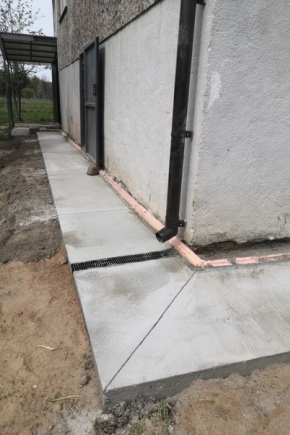
It is possible to equip an expansion joint in the blind area only if you know exactly what it is made of. An important related topic is how to properly make an expansion joint in a concrete blind area. The norms of the device, enshrined in SNiP, must be supplemented with important practical information.
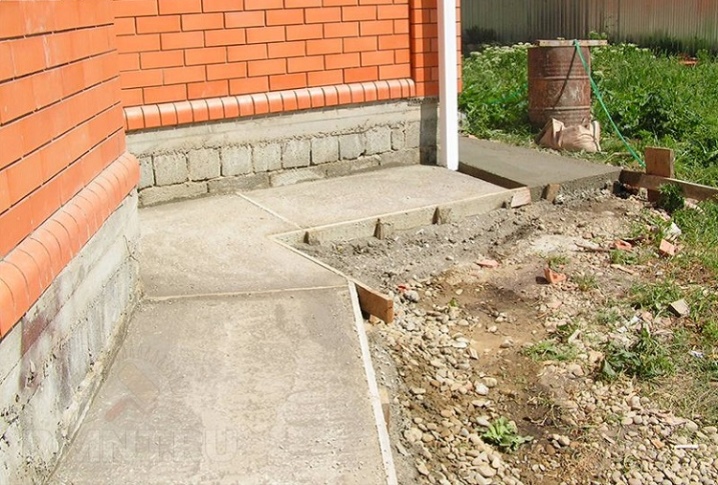
What it is?
Expansion joints in the blind area is a topic that cannot be ignored when discussing the construction of private and public buildings, production facilities... Their goal is reduction of loads that affect the structure... The causes of stress are very diverse, but all of them, in one way or another, can provoke unwanted changes. Such seams are also called compensation seams, since they just smooth out negative influences from the outside. To ensure tightness, a special insulating material is added there.
Various types of deformation safety net are known. They are distinguished depending on what negative impact this part of the blind area should reflect. The intensity of the impact is also important and can be contained. Be sure to take into account other factors, in determining which they consult with engineers.
Seams can be created from a variety of materials, the composition of which is determined by the needs in a particular case.
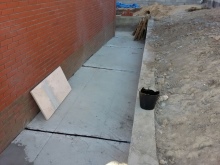

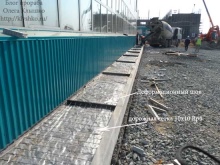
Norms
The main task of the drafters of any standard is to offer such solutions that will avoid a drop in the bearing characteristics of structures. It is imperative to provide for the use of sufficiently elastic insulating materials. If a prestressed structure with 1 and 2 levels of crack resistance is created, the gap between expansion joints must be calculated taking into account the calculated crack resistance. SNiP provides for the mandatory use of cement not lower than M400. If joints with an opening of less than 0.5 mm are cemented, then special low-viscosity solutions must be used.
Inspection and acceptance of work sites is carried out strictly before finishing... The compensating layer must adjoin the entire wall of the house. Fastening along the perimeter of the transverse boards is provided by default. Their thickness should be 2 cm, and the step should be from 1.5 to 2.5 m.
It is not allowed to create blind seams from materials with low elasticity or low elasticity.

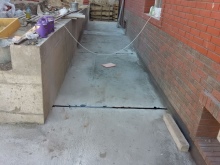
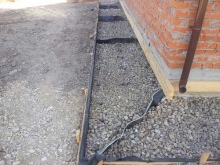
Views
Expansion joints, as their name implies, are designed to compensate for changing temperatures. This is very important even in temperate regions.... When it is hot in summer and severe cold falls in winter, even a well-designed blind area can crack. When calculating protective elements, be sure to pay attention to the lowest temperature that can be characteristic for a certain area. But the need for shrinkage seams is somewhat less than in other options.
They are mainly used if you need to create a frame from monolithic concrete. It has long been known that its solidification is accompanied by the appearance of cracks that can grow and form cavities. If the number of cracks and the severity of the cavities cross a certain line, the blind area will not be able to perform its functions. The seams are used only until the concrete is completely hardened, until it shrinks.
Once the material is dry and reaches its design specifications, the cut is supposed to be stamped 100%.
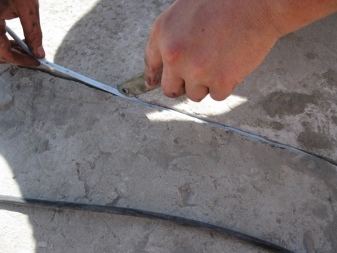
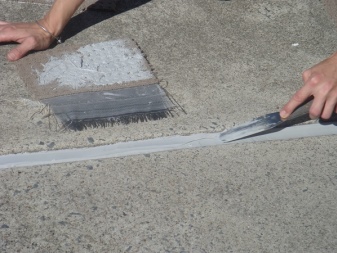
Sedimentary expansion joints have a special function - they must compensate for pressure unevenness in different places.... Often, it is this unevenness that leads to the formation of cracks and further rapid destruction of the structure. When the work is completed, it is required to increase the tightness of the recess and its edges in order to ensure that the blind area is protected from dust and water. The settlement expansion joint must be filled in such a way that no voids are left. These constructs are used:
-
on soil characterized by non-uniform flowability;
-
if necessary, attach other structures and structures;
-
in all other cases, where uneven subsidence of the foundation is also likely for other reasons.
Seismic (they are also anti-seismic) seams stand apart. Such enhancements are needed in areas with a significant level of seismic and volcanic activity. These elements can protect the blind area from destruction at the normative level of earthquakes. Each seismic seam is designed according to a separate scheme.
Compaction of the surface layers is critical.

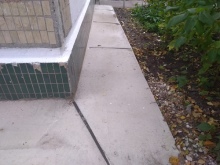

Materials (edit)
Everything is relatively simple here. Shrinkage expansion joints are made of concrete. More precisely, in large-scale construction, floor saws with water-cooled cutters are used. They make special cuts. If the construction is carried out privately, then you need to use embedded slats.
They are laid to a strictly defined depth. It is equal to one third of the width of the cover. When the reiki have completed their tasks, they are removed. Increasing the distance decreases the tensile stress. Shrinkage, as they say, is "fully worked out", that is, controlled cracks are formed during the cuts, and mutually autonomous sections are formed.
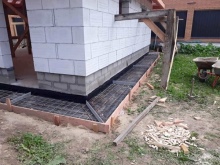
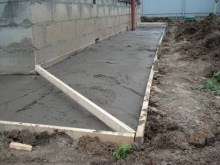
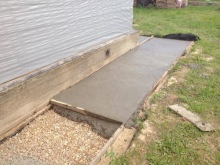
Expansion joints cannot be created with thick planks or planks. Instead of them, a damping tape and roofing material are used. Compensation areas are often formed using special profiles. They are installed together with waterproofing. Basic products are made from:
-
polyvinyl chloride;
-
thermoplastic elastomer of various types;
-
various grades of stainless steel;
-
aluminum.
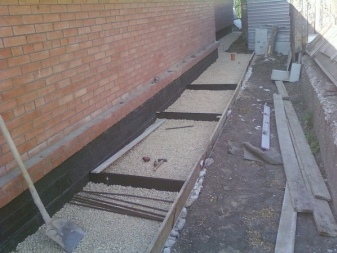
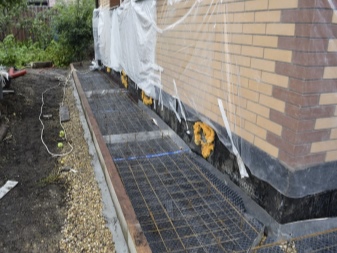
How to do it right?
It may seem that the device of the blind area is quite simple, but this is not entirely true. Compensating seams must be positioned according to a special algorithm. When they constantly walk on the surface, auxiliary loads will have to be calculated. The optimal distance between the seams should be from 2 to 2.5 m. The most accurate parameters will be thought out by a specialist who has studied the materials of the walls and the type of foundation.
After removing the temporary joints, the resulting voids must be filled with a tape based on polyethylene foam. In some cases, a simple construction sealant is used instead. Expansion joints must be insulated against water ingress. If moisture flows under the blind area, all efforts to arrange it will be in vain. Waterproofing in the structure around the house is determined by:
-
the characteristics of the cuts;
-
the highest calculated level of deformation effects;
-
intensity of water pressure.
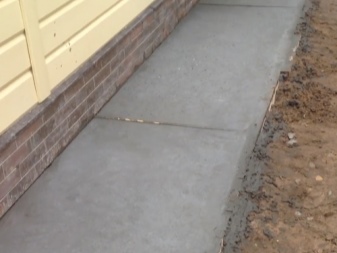
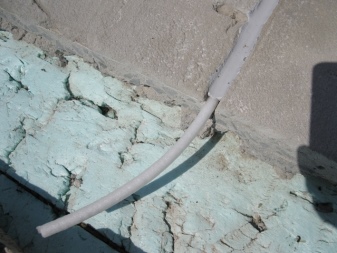
Sealing is often done with polymer or rubber blocks. In other cases, a hernite tourniquet can be placed. It is quite possible to close the expansion joint in the concrete blind area using a waterstop. Finally, specialized designs can be supplied. The cheapest way to seal the voids that appear is polyethylene foam, which is very elastic and shrinks without any problems.
The concrete surface can also be spilled with mastic. After it hardens, a coating appears similar in properties to rubber. Surface finishing in this case is done with a soft trowel. But, however, The best level of seam sealing is considered to be the use of a waterstop.
This solution is also distinguished by its high mechanical strength.
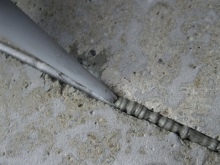

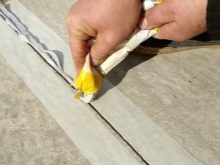
The division of monolithic structures of slabs into individual blocks can be performed by laying a waterproof layer over the sand-crushed stone base. Next comes the reinforcing mesh, which is welded with an electric apparatus. Separating partitions are installed on top of this mesh and fixed. Sometimes the foundation and the blind area are separated using plastic, roofing material, glass, wood or polymer films. In some cases, expansion joints are cut with a machine using abrasive or diamond wheels.
Expansion joints can be decorated with vinyl tape or bars inserted into the formwork. The next step is to pour 50 mm of concrete. While it is fresh, only recently grabbed, they put a reinforcing mesh. Damping tapes are perfectly masked by the outer trim of the blind area.
You can increase the reliability of their attachment by using glue.
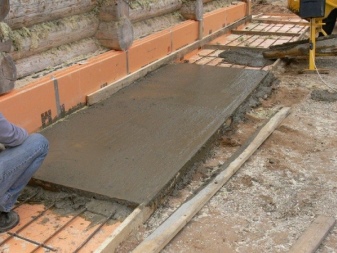
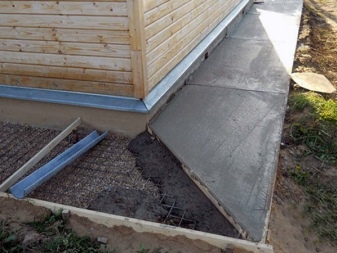
You can learn how to cut expansion joints in a concrete blind area from the video below.













The comment was sent successfully.